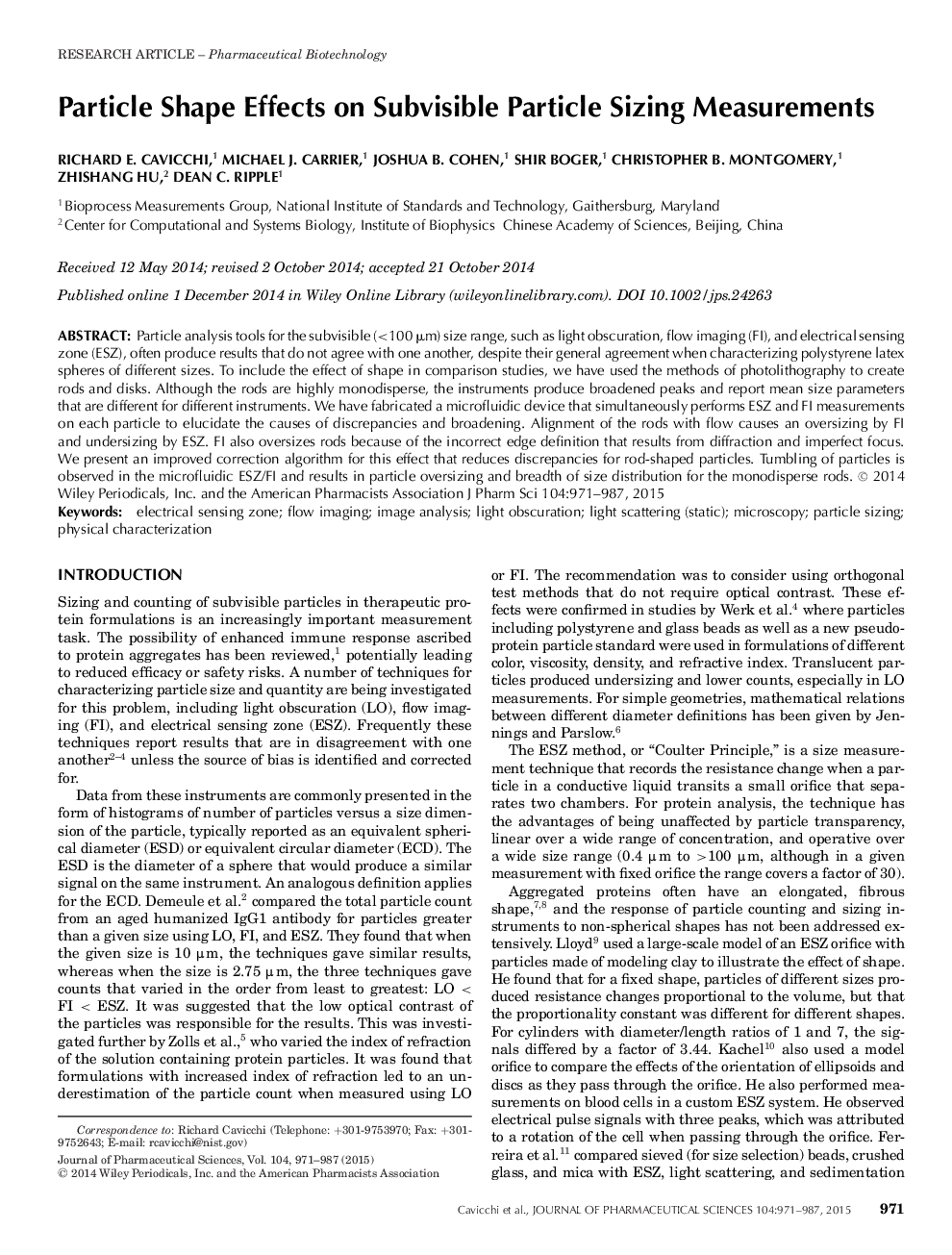| Article ID | Journal | Published Year | Pages | File Type |
|---|---|---|---|---|
| 10162057 | Journal of Pharmaceutical Sciences | 2015 | 17 Pages |
Abstract
Particle analysis tools for the subvisible (< 100 μm) size range, such as light obscuration, flow imaging (FI), and electrical sensing zone (ESZ), often produce results that do not agree with one another, despite their general agreement when characterizing polystyrene latex spheres of different sizes. To include the effect of shape in comparison studies, we have used the methods of photolithography to create rods and disks. Although the rods are highly monodisperse, the instruments produce broadened peaks and report mean size parameters that are different for different instruments. We have fabricated a microfluidic device that simultaneously performs ESZ and FI measurements on each particle to elucidate the causes of discrepancies and broadening. Alignment of the rods with flow causes an oversizing by FI and undersizing by ESZ. FI also oversizes rods because of the incorrect edge definition that results from diffraction and imperfect focus. We present an improved correction algorithm for this effect that reduces discrepancies for rod-shaped particles. Tumbling of particles is observed in the microfluidic ESZ/FI and results in particle oversizing and breadth of size distribution for the monodisperse rods. © 2014 Wiley Periodicals, Inc. and the American Pharmacists Association.
Keywords
Related Topics
Health Sciences
Pharmacology, Toxicology and Pharmaceutical Science
Drug Discovery
Authors
Richard E. Cavicchi, Michael J. Carrier, Joshua B. Cohen, Shir Boger, Christopher B. Montgomery, Zhishang Hu, Dean C. Ripple,
